The Latin word “cella,” which means “a tiny room,” is where the word “cell” first appeared. The fundamental unit of all living things is cells, just like bricks in building construction. There are many trillions of cells in the human body, and each one has a specific purpose. The fundamental and most fundamental structural components of living things are cells. In this article, we go through the cell structures, their types, cell organelles, cell division and many more.
Cell Definition in Biology
The structural and biological functional unit of a self-reproducing organism consisting of protoplasm, surrounded by a semi-permeable or permeable membrane, is known as a Cell. A cell is an organism’s structural, functional, and biological unit in biology. It is a self-replicating autonomous unit of life that can exist as a functionally independent unit of life (as in the case of a unicellular organism) or as a sub-unit in a multicellular organism (as in plants and animals) that serves a specific purpose in tissues and organs.
Discovery of Cell?
In 1666, Slices of cork were observed by Robert Hooke while using a simple magnifier. Cork is a component of a tree’s bark. He cut the cork into thin slices and looked at them under a microscope. He noted that the cork slice had divided boxes or sections like a honeycomb. He also observed that a wall or other barrier was separating one box from the next. Each box is referred to as a “cell” by Hooke.
Cell Diagram
In the body, cells come in a variety of sizes and forms. For descriptive purposes, the term “generalized cell” is proposed. It combines characteristics from all cell types. A cell has three parts: the cell membrane, the nucleus, and the cytoplasm. The cytoplasm contains elaborate arrangements of small fibres as well as hundreds, if not thousands, of minuscule yet distinct structures known as organelles.
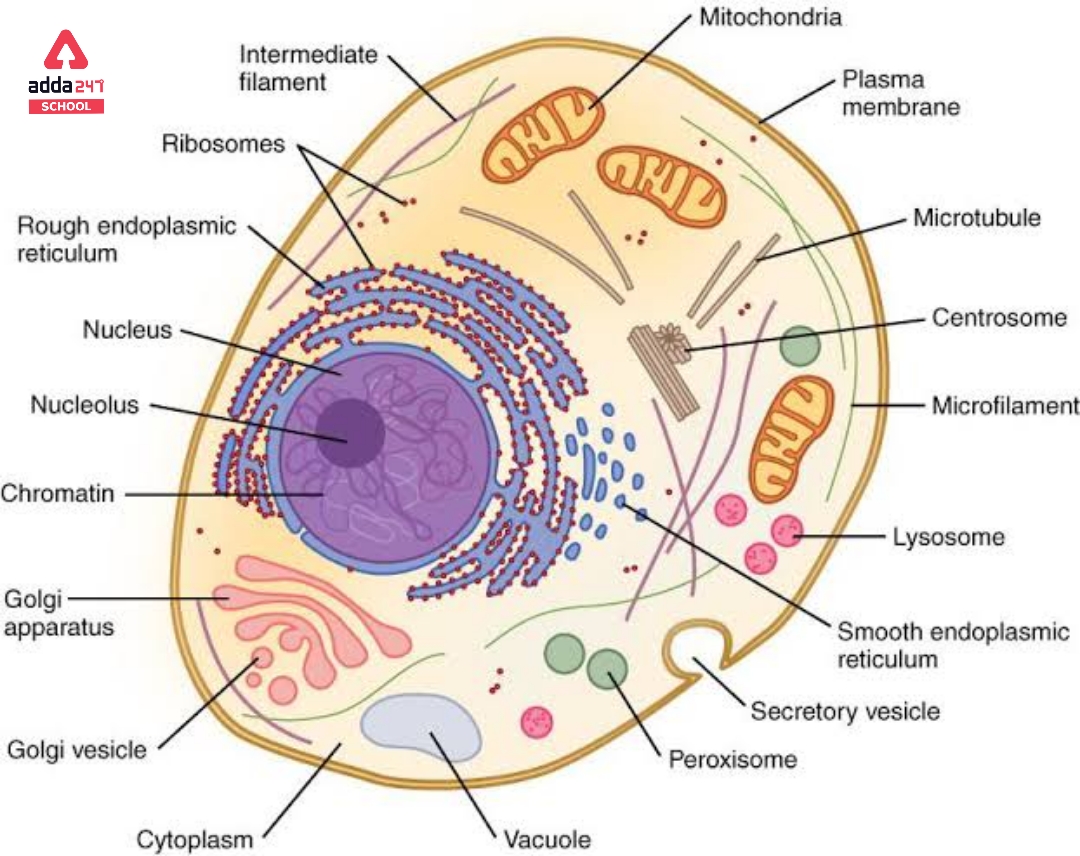
Cell Types
Cells are the most basic and fundamental unit of life. So, if we disassembled an organism down to its cellular level, the cell would be the smallest autonomous component. According to the nature of their nuclei, cells fall into one of two categories:
Prokaryotic cell
These cells have a primitive nucleus rather than a distinct or genuine nucleus. Organelles normally attached to membranes such as the nuclear membrane are absent. Nucleoid is the name given to this kind of nucleus. The most extensively researched prokaryotic cell is Escherichia coli.
Eukaryotic cell
genuine nuclei that are membrane-bound in the cells. A well-defined nuclear membrane and chromosomes are found in the nucleus. These cells have membrane-bound organelles like mitochondria and Golgi bodies, among others.
Examples of eukaryotic cells are plants, animals, fungi etc.
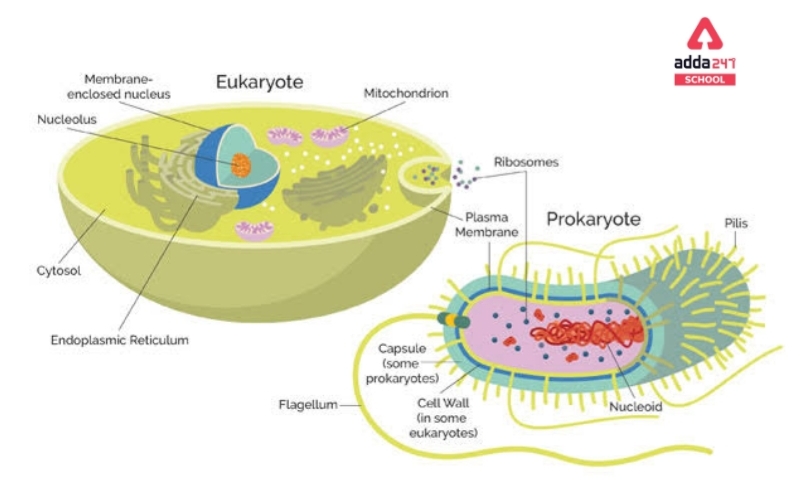
Cell structure
As the structural unit of a house is a brick, so the structural unit of an organism is a cell.
Cell membranes, cytoplasm, and nuclei are the three fundamental parts of a cell.
Cell Membrane:
Also known as the plasma membrane, the cell membrane encloses the cytoplasm and nucleus. The membrane separates cells from the surrounding media as well as from one another.
Surrounding the protoplasm of every living cell is a semi-permeable or permeable membrane composed of elastic, protein and lipids
The Cell membrane is made up of three layers. The outer and inner layers are made up of proteins and the middle layer is made up of fats or lipids. The lipid layer is composed of phospholipid sub-layers.
Functions: The main functions of the cell membrane are –
[i] Protecting kosher protoplasm.
[ii] Aiding in cell membrane diffusion and permeation.
[iv] Ingestion of liquids and solids by pinocytosis and phagocytosis respectively.
Cytoplasm
It is the jelly-like material sandwiched between the nucleus and the cell membrane.
Excluding the nucleus and organelles, the rest of the protoplasm is colourless, gelatinous, translucent and viscous fluid is called cytoplasm.
It consists of two parts.-Ectoplasm& Endoplasm
The membrane-adjacent part of the cytoplasm is transparent and non-granular, this part is called ectoplasm. The opaque granular part extending to the nucleus apart from the ectoplasm is called the endoplasm. The cytoplasm is granular, tubular, reticular, alveolar and colloid in nature.
What is Cell Wall?
Plant cells have a thick outer layer called the cell wall in addition to the cell membrane. For protection, plants need this extra layer to surround the cell membrane. Plant cells require defence against extreme temperature changes, strong winds, atmospheric moisture, etc.
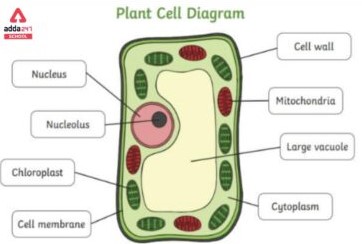
Nucleus
It is an essential component of every living cell. Typically, it is found in the cell’s centre.
The dense and spherical protoplasmic part surrounded by the membrane of a typical cell is called the nucleus.
Structure: An ideal nucleus consists of four parts, namely—
• Nuclear membrane- The membrane that surrounds the nucleus is called the nuclear membrane. The nuclear membrane separates the internuclear compartments from the cytoplasm.
• Nucleoplsam- The clear semi-fluid substance between nucleoplasm and nucleus is called nucleoplasm or nuclear fluid. It acts as a conduit for the nucleus.
• Nucleoplasm: The clear semi-fluid substance inside the nucleus is called nucleoplasm or nuclear juice or karyolymph. It acts as a conduit for the nucleus.
•chromatin filaments: The reticulum-like parts floating in the fluid or fluid of the nucleus are called nuclear reticulum or chromatin filaments. Chromosomes are formed from these during cell division. Chromatin structure is of two types, namely—heterochromatin and euchromatin.
• Nucleolus: It is the nucleus-centred dense body, which consists of numerous granular and spindle-like parts. This part is involved in RNA production and protein synthesis.
→ Function :
[i] Regulates the biological functions of cells.
[ii] Transfers hereditary characteristics from one cell to another and from one gene to another.
[iii] Synthesizes RNA and proteins.
Cell organelles
Cell encloses There are numerous other parts or organelles in the cytoplasm. These include ribosomes, Golgi bodies, mitochondria, and others.
Mitochondria
The cell’s mitochondria are specialised organelles that are encased in two membranes. Cytochromes that are engaged in oxidative phosphorylation and the electron transport chain reaction are found in their inner membrane. It produces ATP.
As a result, mitochondria serve as the cell’s powerhouse.
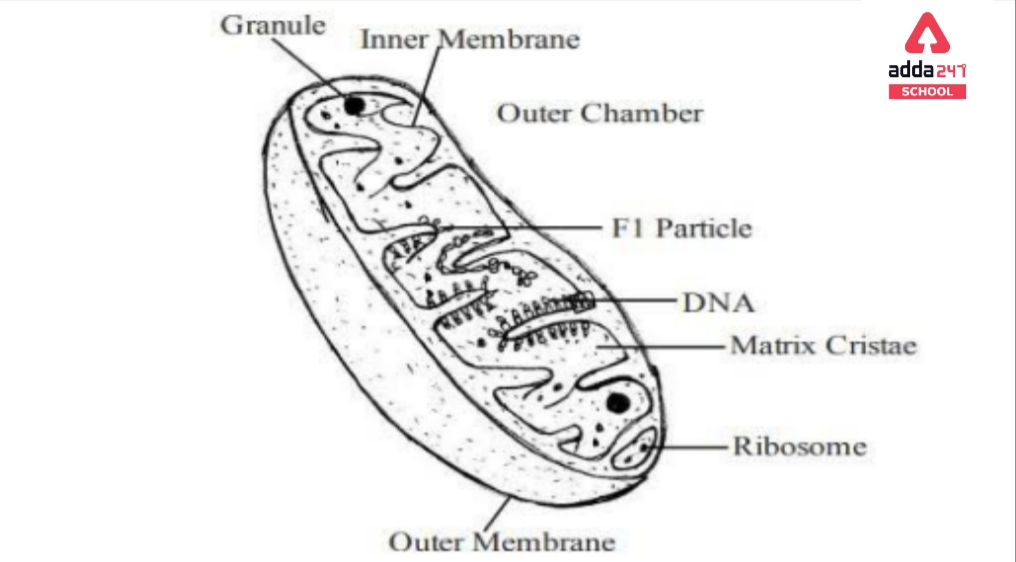
Function-
The majority of the ATP produced by cells is produced by mitochondria.
Endoplasmic Reticulum
One significant organelle found in eukaryotic cells is the endoplasmic reticulum (ER). It belongs to the cell secretion pathway. It is a reticular network of membrane-enclosed compartments that is extremely complex and permeates the whole cytoplasm. ER is divided into two kinds with distinct functional characteristics:
A) Rough ER – They are of the rough type, secretory in function and prevalent in secretory cells.
B) Smooth ER: These typically arise from RER. Since they serve as storage, there are several of them in storage cells (oocyte, adipocyte)
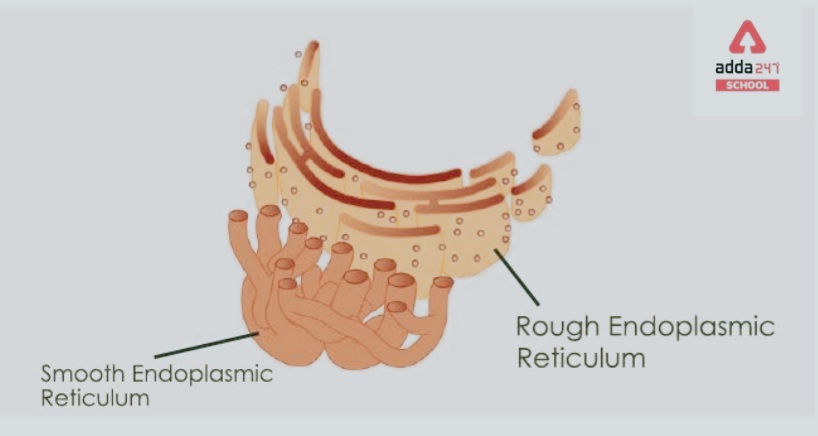
Function
1. Plays a part in protein synthesis.
2. SER acts as a storage container.
Lysosome
Animal cells’ cytoplasm contains lysosomes, which are spherical vesicles surrounded by a single membrane. They have hydrolyzing enzymes that can break down proteins, polysaccharides, DNA, and lipids.
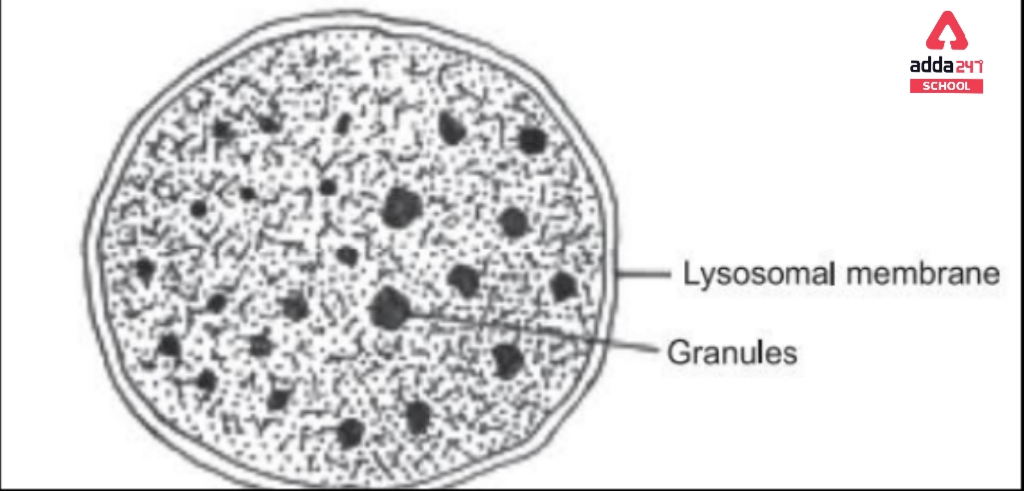
Function
1. Digestion: The intracellular and extracellular digestion of biological macromolecules involves hydrolytic enzymes.
2. Autophagy – This process of breaking down intracellular material frees the cell from all harmful effects.
Centrosome
In eukaryotic cells, the centrosome serves as the primary hub for microtubule organisation. Two barrel-shaped microtubule clusters, known as “centrioles,” plus a collection of proteins that aid in the formation of new microtubules make up centrosomes. Since it aids in the organisation of the spindle fibres during mitosis, this complex is often referred to as the microtubule-organizing centre (MTOC).
Two components make up the centrosome:
1) a pair of centrioles;
2) Centrosphere
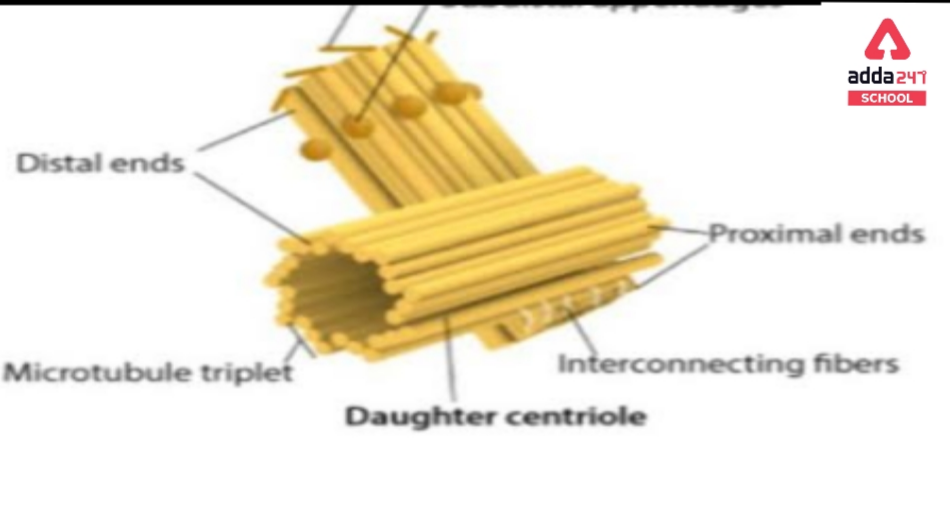
Function
1. Only animal cells contain this organelle, which serves as a microtubule organisation centre (MTOC).
2. During cell division, MTOC creates spindle fibre.
Plastid
In the plant cell, plastids are specialised organelles. The chloroplast’s pigment molecules take solar light energy and use it to decrease CO2 to create starch and sucrose, two types of carbohydrates. It can also produce ATP. The chloroplast contains a pigment called chloropyll that may absorb sunlight.
Function
Sunlight-based ATP synthesis in plant cells.
Ribosome
The ribosome is an intercellular structure made up of both RNA and protein that serves as the location of protein synthesis in cells. The messenger RNA (mRNA) sequence is decoded by the ribosome, which translates the genetic code into a particular string of amino acids that form extended chains and fold to form proteins.
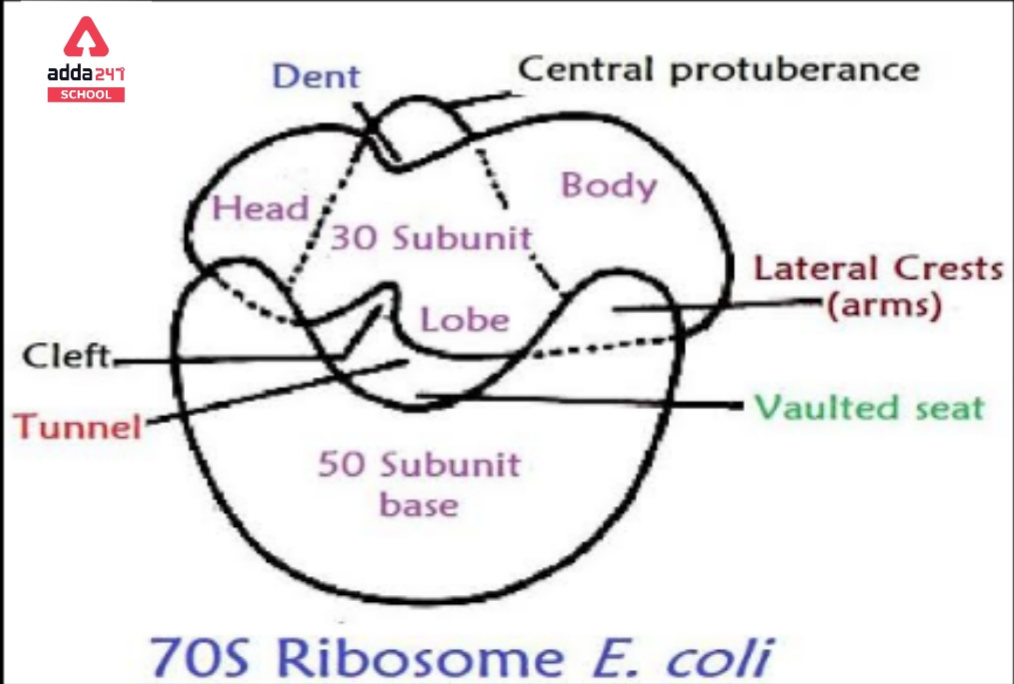
function
The cell’s protein-producing facility includes ribosomes.
Cell Function
1. Provide body structure to an organism.
2. Acts as an organism’s power source (ATP generation) for metabolic and physical activities.
3. Promote growth by encouraging cell division.
4. Cells are capable of self-replication and also house the body’s genetic material.
Cell division
In biology, When a mother cell divides into two or more daughter cells, this process is known as cell division. Each parental cell produces two daughter cells, This is how all cells reproduce.
Cell division occurs in eukaryotes in two ways:
• Mitosis – Mitosis, also known as Vegetative division, in which each daughter cell duplicates the parent cell with the same genetic makeup of the parent cell, is one of two unique forms of cell division.
• Meiosis- Meiosis or reproductive division, in which the number of chromosomes in the daughter cells is cut in half to produce haploid gametes
This cell division produces four haploid daughter cells.
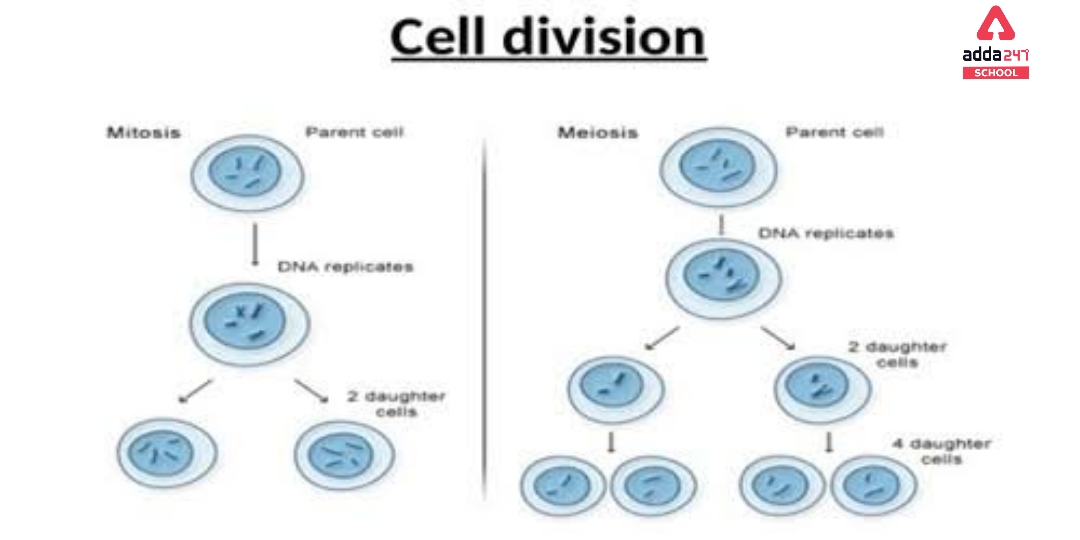
Cell cycle
A cell cycle is a series or sequence of events which results in a cell’s growth and division. There are four distinct phases in the eukaryotic cell cycle: G1 phase, S phase (synthesis), G2 phase, also known as interphase, and M phase (mitosis and cytokinesis). A cell spends the majority of its time in what is known as interphase, where it develops, copies its chromosomes, and gets ready to divide.
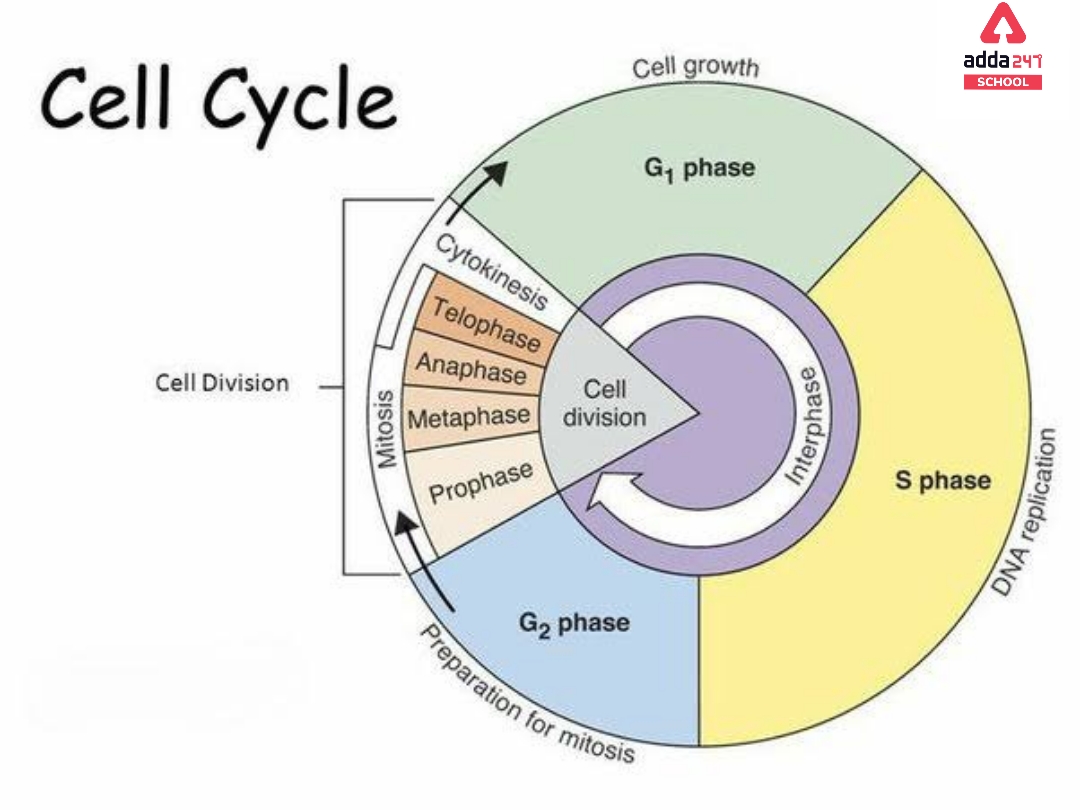

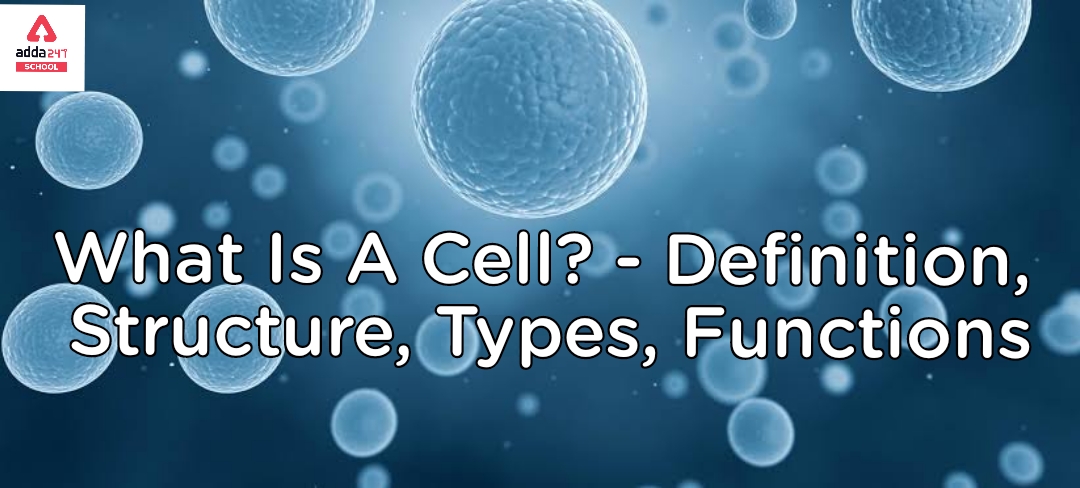







 UP Board Exam Date 2026 OUT, Download UP...
UP Board Exam Date 2026 OUT, Download UP...
 UP Board Class 12 Syllabus 2025-26 Out, ...
UP Board Class 12 Syllabus 2025-26 Out, ...
 NEET Syllabus 2026, Download Subject Wis...
NEET Syllabus 2026, Download Subject Wis...

















